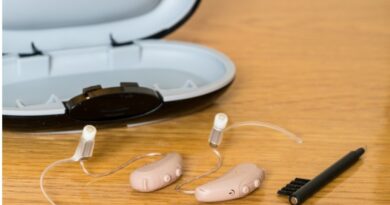Microelectronics: Understanding the Tiny Tech Revolution
Imagine a world where a piece of tech smaller than your fingernail holds the power to change lives, shape industries, and revolutionize our understanding of what’s possible.
That’s where microelectronics come in. But what are they? And how do they support our lifestyles?
We can help.
Read on to find out: What is microelectronics?
What is Microelectronics?
Microelectronics deals with the design, manufacture, and application of extremely small electronic components and circuits. These semiconductor components typically have dimensions on the order of micrometers or even nanometers.
Microelectronics has revolutionized technology by allowing us to make devices smaller, faster, and more efficient. It’s what powers many of the gadgets we use every day, from smartphones and computers to medical devices and automotive systems.
To learn more, check out Altera products today.
Examples of Microelectronics
The most fundamental example of microelectronics, integrated circuits, are found in nearly all electronic devices.
Smartphones and tablets rely heavily on microelectronics to integrate complex functionality into small form factors. Microprocessors, memory chips, sensors, and display drivers are all examples of microelectronic components in smartphones and tablets.
Modern vehicles are equipped with various microelectronic systems for engine control, safety features, entertainment systems, and navigation. These systems include engine control units, airbag sensors, anti-lock braking systems, and infotainment systems.
Wearable technology, such as fitness trackers, smartwatches, and augmented reality glasses, heavily relies on microelectronics for compactness and functionality. These devices incorporate sensors, microprocessors, wireless communication modules, and display screens.
Benefits of Microelectronics
Microelectronics allows for a significant reduction in the size of electronic devices and systems, making it possible to create portable and even wearable technology.
This miniaturization has led to the development of smartphones, laptops, and medical implants. These devices are powerful. But, they’re still small enough to fit into our daily lives.
Smaller devices consume less power. That’s critical for battery-operated portable devices.
This efficiency extends battery life. It reduces the environmental impact by lowering energy consumption across countless applications. These can range from consumer electronics to large-scale data centers.
While the production of microelectronic devices has environmental impacts, their use can lead to significant environmental benefits.
For example, more efficient power usage reduces the carbon footprint of electronic devices. The miniaturization of components can lead to less material use and waste.
Microelectronic devices are generally more reliable. They tend to be solid-state and have fewer moving parts (or none at all). They have longer lifespans than their larger, mechanical counterparts.
This reliability is crucial for critical applications. That includes automotive safety systems, medical devices, and aerospace technology.
The ability to pack millions or even billions of transistors into a small chip reduces the cost per function of electronic devices.
As manufacturing processes improve and scale, the cost of microelectronic components continues to decrease, Which makes advanced technology accessible to a broader segment of the population.
Microelectronics: Explore Today
What is microelectronics? Now that you know the answer, you can figure out how to use them in your life and career.
Do you want to learn about different tech topics? Make sure you read more of our other posts today.




